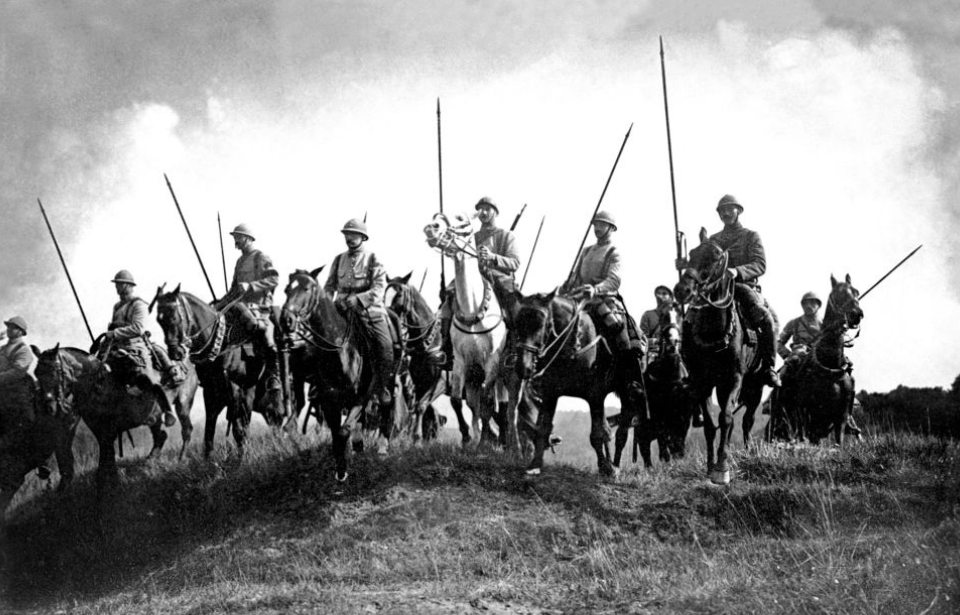
World War I witnessed the advent of mechanized warfare, with tanks, artillery and machine guns redefining the nature of combat. Amid this modernization, the role of cavalry units faced several challenges. The French cavalry, renowned for their gallantry and historical achievements, found themselves adapting to changing battlefield conditions during WWI, while simultaneously striving to remain relevant in an era dominated by trench warfare and industrialized weaponry.
Before WWI, the French cavalry boasted a storied past and were often hailed as the epitome of mounted warfare. The legacy of Napoleon Bonaparte‘s legendary horsemen still resonated within their ranks, inspiring a sense of honor and pride. Among their primary roles were reconnaissance, flanking maneuvers and engaging enemy infantry in shock charges. However, these tactics were soon tested in the brutal bloodbath that was the first large-scale conflict of the 20th century.
As the war escalated, the traditional methods of cavalry warfare clashed with the realities of modern battlefields. The emergence of trench warfare and the aforementioned widespread use of machine guns and artillery led to devastating losses for all mounted units. Open fields, once ideal for cavalry charges, became death traps, and the initial stages of the war saw several futile attempts at mounted attacks, resulting in heavy casualties and minimal gains.
The above photo, taken around 1914, shows a group of French lancers prepared to follow a group of retreating German troops. Lancers are simply a subset of cavalry, named for the lances they carried into battle while on horseback. They exemplified the early use of such troops in WWI.
In response to the harsh lessons learned in the early years of the conflict, the French cavalry underwent significant changes. They shifted their focus from large-scale charges to dismounted combat roles. By dismounting, cavalry units could better navigate the treacherous terrain, conduct stealth operations and engage in skirmishes without being vulnerable targets on horseback.
Along with their diminished role in shock combat, their skills in reconnaissance quickly became obsolete. When the war began, both the French and Germans relied on this method. As time went on and trenches were established, this quickly changed. In the first weeks of WWI, there were many instances where French cavalry failed to accurately report German movements to command. Advancements in aircraft technology soon made the aerial vehicles a more reliable way to gather this information.
Unlike the Germans, who largely got rid of their mounted troops as the war went on, the French retained them primarily for use in chasing down the enemy once lines were broken. However, the general opinion among their allies was that these cavalrymen weren’t particularly good horsemen.
One man observed, “The French cavalryman of 1914 sat on his horse beautifully, but was no horsemaster. It did not occur to him to get off his horse’s back whenever he could, so there were thousands of animals with sore backs.”
More from us: Soldiers Got Creative When Testing Out Gas Masks In WWI
While this did change later in the conflict, perhaps simply out of necessity, it marked a big change for these mounted combatants from the beginning of the fighting.





